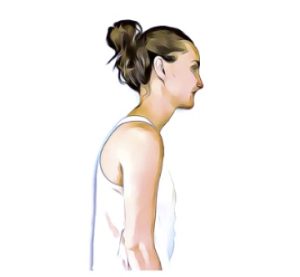CUMBERLAND PHYSIOTHERAPY: Almost everyone will experience lower back and neck pain at some point in their lives, even if just in the form of a slight neck twinge after sleeping in an odd position. Spinal pain of the thoracic region is much less common, however, you might be surprised to know how important this part of the body is when it comes to pain and injury.
What is it?
The thoracic refers to the part of the spine that is surrounded by the rib cage. It consists of 12 vertebrae with small, thick discs that sit between each of them. The thoracic spine isn’t an area that you might associate much with movement, however, this area can account for a surprising amount of flexibility, particularly in rotation.
With joint attachments both between each side of the 12 vertebrae and a rib on either side, the thoracic spine has almost more individual joints than you can count. If each of these
joints is not regularly moved through their full range they can tighten up and lose flexibility. This stiffness can become quite significant over time.
Why is it important?
Many people may not even notice this lack of movement, primarily because the neck and lower back provide much more range and can easily compensate for any loss of thoracic flexibility to complete everyday tasks.
When there is no movement occurring in the thoracic region, this means that the structures of the joints in other regions are pushed closer to their limits of range, particularly during rotation. This results in more compression and stress on these joints and the structures surrounding them, such as nerves, blood vessels and muscles.
Thoracic stiffness can be a significant risk factor for neck and lower back pain. This can also reduce the mobility of the chest wall, which can result in less efficient breathing mechanics and, in extreme cases, even reduced exercise tolerance.
How can physiotherapy help?
Your physiotherapist is able to assess your thoracic mobility and help you with treatments to improve your range, both with manual therapy and home exercises. They may even help improve your thoracic flexibility as part of a treatment plan for neck and lower back pain.
None of the information in this article is a replacement for proper medical advice. Always see a medical professional for advice on your injury.

